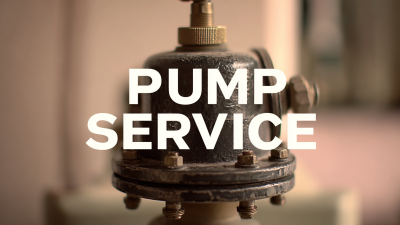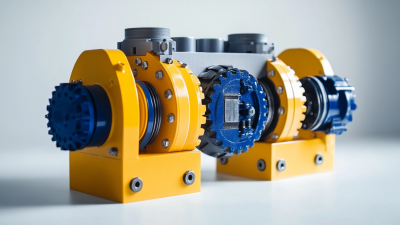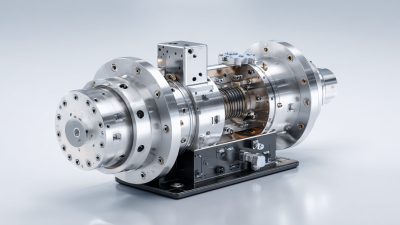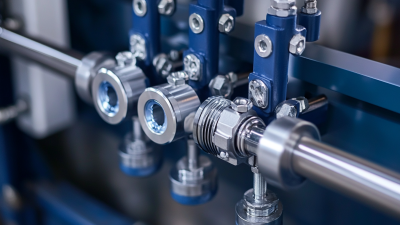- Our Products
- Repairs & Service
- Custom Design
- Blog
- About Us
- Resources
- Industries
- Contact Us
- Contact Bestrei UK
- Compliments / Complaints
- Global Supply
Maintaining the efficiency and longevity of your pumping system is crucial for any operation relying on pumps. Identifying warning signs that indicate the need for pump repairs can save you time, money, and potential downtime. Understanding these warning signs ensures that you can address issues before they escalate into major problems, ultimately protecting your investment and maintaining operational flow. Whether it’s unusual noises, fluctuating pressures, or visible leaks, recognizing these symptoms early allows for timely intervention. In this guide, we will explore the top warning signs that suggest your pump may be in need of repair, equipping you with the knowledge necessary to keep your equipment running smoothly and effectively. By being proactive in identifying potential concerns, you can ensure optimal performance and avoid costly repairs down the line.

When operating a pump, unusual noises and vibrations can be early indicators of underlying issues that require immediate attention. A well-functioning pump typically operates smoothly and quietly, so any sudden change in sound—such as grinding, humming, or rattling—can suggest problems like wear and tear on the internal components or even misalignment. It's essential to listen carefully to these sounds, as they can provide crucial clues about the condition of the pump.
In addition to unusual noises, excessive vibration is another critical warning sign. Pumps should generally run with minimal vibration. If you notice significant shaking or movement, it may indicate an imbalance or loose components that need to be addressed. Ignoring these signs can lead to more severe damage or complete pump failure. Regular monitoring and maintenance are key to ensuring longevity and optimal performance, so always be attuned to any changes.

Understanding changes in pump performance or efficiency indicators is crucial for maintaining optimal operations. When a pump begins to exhibit irregular behavior, it can signal underlying issues that require immediate attention. One of the first indicators to monitor is the flow rate; a sudden drop may suggest blockages or mechanical failures, whereas an unexpected increase could indicate other problems that compromise the system's integrity.
Additionally, monitoring energy consumption can provide significant insights into the pump's health. If a pump starts consuming more power than usual without an increase in workload, it may indicate inefficient operations or potential failure. Other performance metrics, such as pressure readings and vibration levels, should also be evaluated regularly. Deviations from established benchmarks can serve as warning signs that repairs are necessary to prevent further damage and ensure reliable functionality.
Frequent cycling or shutdowns of a pump system can be significant warning signs that repairs may be needed. In many industrial settings, especially in power plants, the shift to cycling operations can lead to increased wear and tear on equipment. As facilities adapt to more variable load conditions, the stress on pumps can result in premature failure or performance degradation. Monitoring the frequency of pump cycling is essential, as consistent on-off operations can strain components and compromise their integrity over time.
In light of recent discussions surrounding the operational challenges of coal-fired power plants, understanding the implications of cycling is crucial. Plants are increasingly faced with higher levels of component damage due to frequent cycling, which underscores the need for vigilant maintenance practices. It is vital to implement preventive measures, such as regular inspections and monitoring systems to detect unusual patterns in pump behavior, ensuring that any abnormalities are addressed before they escalate into costly repairs or extended downtimes. Recognizing these signs early can help maintain efficiency and extend the life of the pump system.

Unexplained leaks or fluid loss around your pump can serve as a significant warning sign that repairs are necessary. If you notice puddles or wet spots near the pump, this could indicate that the seals or gaskets are failing. It's crucial to investigate these leaks promptly, as they may lead to more severe issues, such as reduced efficiency or total pump failure. Regularly checking for signs of fluid accumulation can help you catch these problems early.
Moreover, fluid loss can create a hazardous environment, particularly if the substance being pumped is corrosive or toxic. In such cases, not only does the leak endanger the integrity of the pump, but it also poses a safety risk to personnel and the surrounding area. Addressing leaks as soon as they are detected minimizes potential safety threats and helps maintain operational efficiency. In conclusion, vigilance in monitoring for unexplained leaks around your pump is essential for timely repairs and safe operation.
Increased energy consumption can often serve as a critical warning sign that your pump needs repairs. If you notice a significant spike in your electricity bills compared to normal usage, it could indicate inefficiencies in your pump system. The rising demand for electricity, particularly driven by various technological advancements such as AI and the operation of data centers, means utility costs are escalating. Recent trends show that residential electricity bills are expected to rise slightly, and should your pump be contributing to this increase, prompt attention is required to prevent further costs and possible breakdowns.
It's essential to regularly monitor your energy consumption patterns. If the pump is working harder than usual, it can lead to increased wear and tear, ultimately necessitating repairs or replacements. With AI technologies consuming ever more electricity, prompting a review of energy-efficient practices in all electric devices, it's crucial not to overlook your pump's condition. Addressing energy consumption issues early can help mitigate unnecessary expenses while ensuring your systems are running optimally.
| Pump Type | Normal Energy Consumption (kWh) | Current Energy Consumption (kWh) | Percentage Increase (%) | Warning Sign |
|---|---|---|---|---|
| Submersible Pump | 100 | 120 | 20% | Potential Blockage |
| Centrifugal Pump | 150 | 180 | 20% | Worn Impeller |
| Positive Displacement Pump | 200 | 260 | 30% | Seals Failure |
| Diaphragm Pump | 80 | 96 | 20% | Diaphragm Wear |
| Gear Pump | 120 | 150 | 25% | Gear Wear |






Bestrei UK has a strong footprint across Europe
United Kingdom, Ireland, France, Germany, Norway, Finland Sweden, Spain, Italy